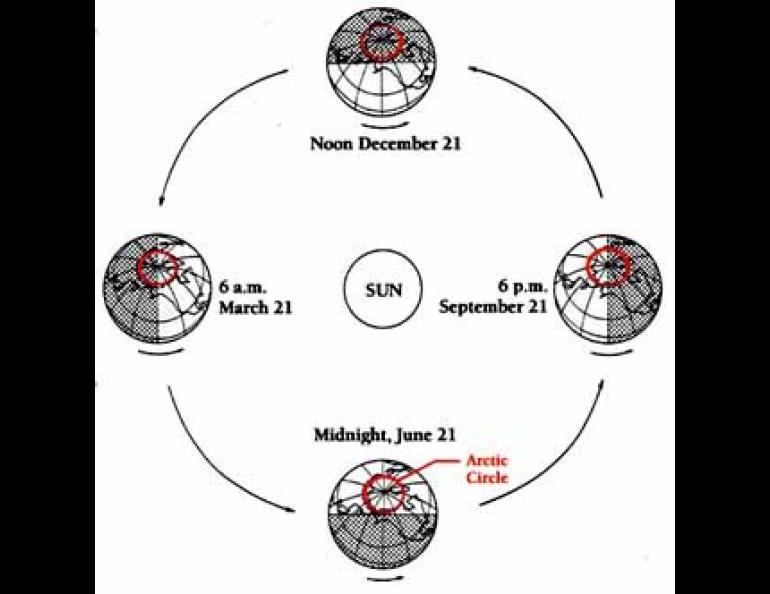
The Shortest Day
The first day of winter may have an ominous ring to some, but to those acclimated to living in the north, it is a cause for celebration, not for gloom - the sun is coming back.
At 7:23 A.M. on December 21st of this year, the winter solstice will occur, signaling the beginning of winter. The exact time changes slightly from year to year (some years, it falls on December 22nd), but the significance is the same. The sun has reached as far south as it will go until the equinox on June 21st, when the days begin to grow shorter again. To northerners, having reached the first day of winter is a good reason to begin celebrating the holidays.
If the earth's equatorial plane were to lie in the planet's orbital plane around the sun, days and nights would be of equal length all over the world, every day of the year (except at the poles, where the sun would appear to just roll endlessly around the horizon). Fortunately for those of us who prefer seasonal variety, the plane of the equator is tilted 23 and 1/2 degrees from the orbital plane. This is equivalent to saying that the poles are tilted 23 and 1/2 degrees from the "vertical," and they maintain that orientation like the axis of a gyroscope as the earth circles the sun. This defines the distance of the Arctic Circle from the North Pole, and its latitude--66 and 1/2 degrees--from the equator.
Above the equator, the summer solstice and the longest day occur at the point of the earth's orbit where the Northern Hemisphere has its "face" leaning most directly toward the sun. During this time, the sun can be seen for 24 hours at, and north of, the Arctic Circle. When the winter solstice occurs, the Northern Hemisphere is tilted to its maximum extent away from the sun, and the sun never rises at all at locations north of the Arctic Circle.
Well, that's not entirely true. If you keep track of this sort of thing, you've probably noticed that the official figures given in the media for total hours of sunlight duration for the shortest day are not the same as the number of hours in the shortest night. Over most of Alaska, the difference amounts to the sun being "up" about an hour longer during the winter solstice than it is "down" during the summer solstice. The discrepancy, occurs because the earth has an atmosphere; on an airless planet, the hours of sunlight and darkness would be exactly the same. Refraction by the earth's atmosphere bends the sun's rays so that it appears to rise before it has actually reached the horizon and set after it has already gone down.
This is one reason why the village of Circle at the end of the Steese Highway on the Yukon River is inappropriately named. Early river travelers were aware that the sun never set at Circle during the summer solstice, and logically assumed that it must therefore lie on the Arctic Circle - hence the name. Actually, Circle lies south of 66 degrees latitude and one must travel still further north to Fort Yukon to be truly above the Arctic Circle.
Of course, these relationships hold true in reverse for the Southern Hemisphere. There, the Antarctic Circle is at 66 and 1/2 degrees south latitude and 23 and 1/2 degrees from the South Pole. When the Northern Hemisphere is tilted away from the sun--winter to us--the Southern Hemisphere is tilted toward it--summer to them. The only times during the year when the sunlight hours are even all over the globe are during the equinoxes, which fall midway between the solstices and usually on the 21st or 22nd of March and September.





